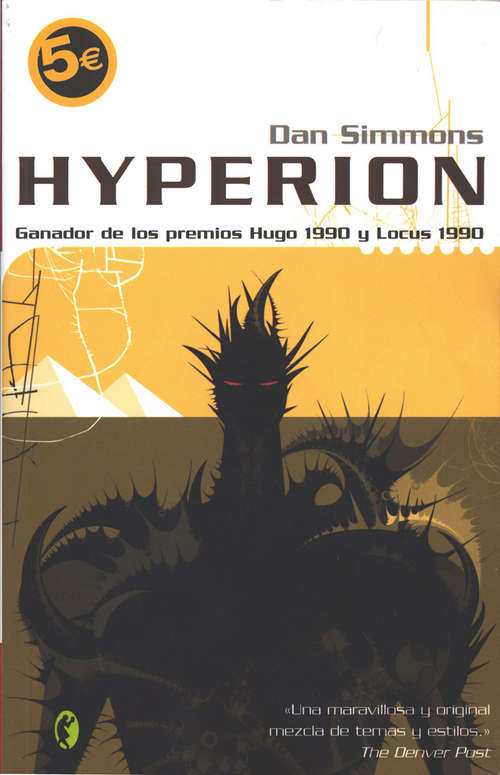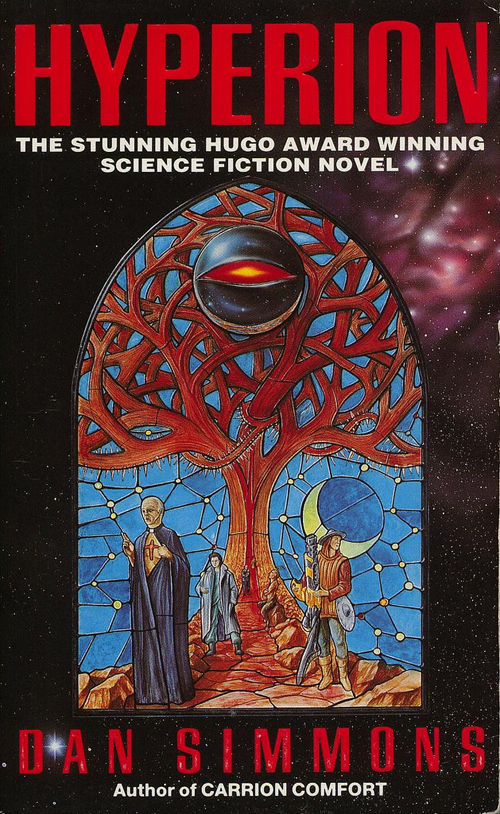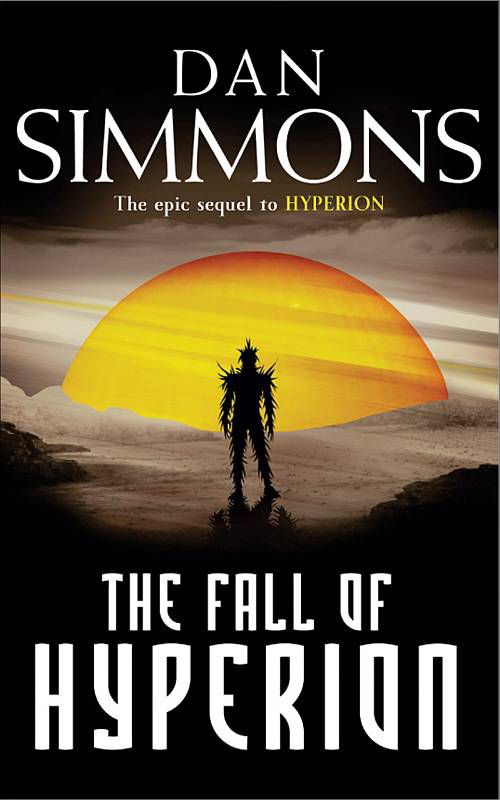Hyperion and The Fall of Hyperion, by Dan Simmons, are one strange, fascinating story in two volumes. I hope that Jo Walton decides to re-read it when she comes to it in her Revisiting the Hugo Awards Nominees blog series on the Tor website (Hyperion won a Hugo and The Fall of Hyperion was nominated).
Spanish cover of Hyperion by Dan Simmons, via Virao del Casco’s flickr.
Normally, I pick out SF books based on hearing about them secondhand from people whose opinions I respect. I started out reading my Dad’s sf collection, branched out from there to other books by the same authors. Reading Trillion Year Spree by Brian Aldiss in the summer of 2005 put a lot of new names on my to-read list. Over the past several years, since I’ve been on Google Reader, I add something to my to-read list when someone blogs about it. Every once in a while, though, I like to find a new book by just browsing around a good book store and picking up something that looks interesting. That’s how I found Hyperion.
Cover of Hyperion by Dan Simmons, via qualityapeman’s flickr.
I’d never heard of Dan Simmons before and I have no idea why. Hyperion and The Fall of Hyperion are very unique, both in setting and structure. Simmons accomplishes this by blending together a lot of disparate elements. Although they’re ostensibly sf, sometimes it’s hard to tell whether I’m reading an sf, horror, or fantasy novel (tellingly, Simmons has written all three). They’re also really hard to classify in terms of subgenre. At the beginning, I felt like I was reading a space opera written before cyberpunk or new wave had much influence. As we learn more about the world of Hyperion, it keeps changing, introducing new space opera, religious sf, and cyberpunk tropes. Simmons weaves these subgenres together in Hyperion by structuring the novel after Canterbury Tales. Seven pilgrims on a journey take turns telling their stories, each of which is wildly different in tone and structure, with the planet of Hyperion and its mysterious, murderous denizen, the Shrike, as the gravitational center they all revolve around.
Unfortunately, although the second book, The Fall of Hyperion, has much more exciting action, it isn’t structured as tightly. There’s a first-person narrative grafted onto the continuing story of the pilgrims. This first- and third-person mashup is explained within the story, but the explanation is a little clunky, and it makes less sense as a framing device during the climax. There are some really awesome moments and imagery though. The environment of the Ouster Swarm is amazing, with mountains floating free of a planet in space and streams that flow between asteroids. I’ve been really into the idea of asteroid and Oort cloud habitats lately and that scene in The Fall of Hyperion definitely set the rubble in my mind spinning. Also, I totally dug the koan-spouting artificial intelligence. There’s just enough of a hook to have me wanting to buy the next pair of books set in the same future history, Endymion and The Rise of Endymion. If I read them I’ll let y’all know what I think.
Have any of y’all read Dan Simmons?



